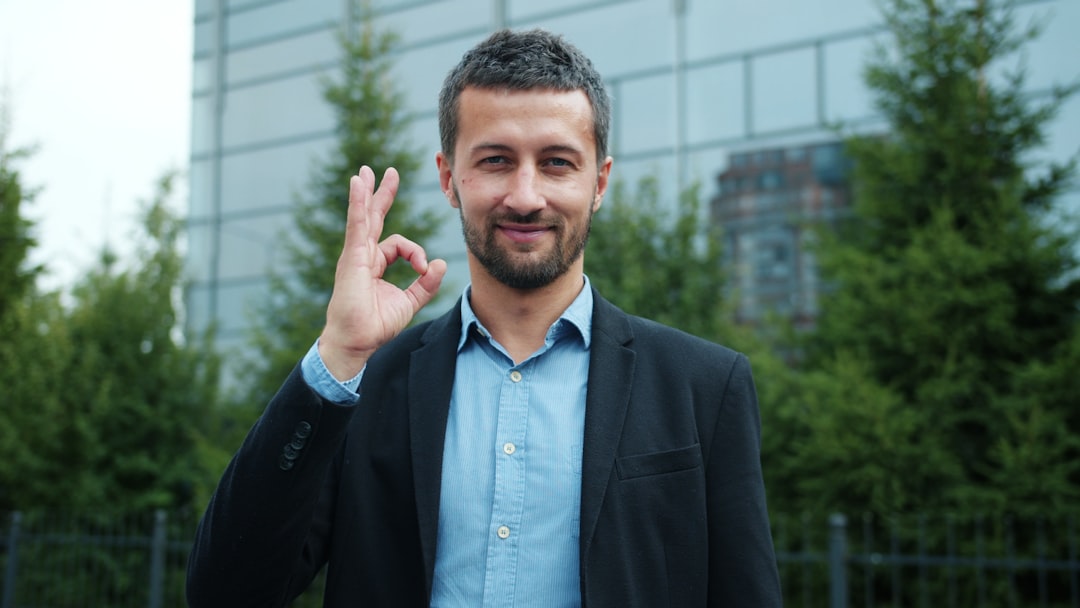Have you ever had that nagging feeling someone wasn’t telling you the complete truth? Maybe their words seemed convincing, but something in their behavior felt off. You’re not imagining it. When people lie, their bodies often betray them through subtle psychological gestures that leak their deception.
These tells aren’t obvious dramatic movements from movies. They’re tiny, involuntary responses that happen when the stress of lying conflicts with our natural communication patterns. Understanding these signals gives you a powerful advantage in reading people accurately. Let’s explore the fascinating world of deception detection through body language.
Mismatched Hand Gestures

Your hands reveal more than you realize when you’re being dishonest. When people tell the truth, hand gestures naturally come before or during their speech, but liars tend to gesture after they speak. This timing mismatch happens because the cognitive load of constructing a lie interferes with natural communication flow.
Research suggests that liars may be more likely to gesture with both hands simultaneously compared to truth-tellers, though specific percentages vary across studies. Watch for people who suddenly start talking with their hands more than usual, especially when the gestures seem forced or come at odd moments in their speech.
Defensive Palm Positioning

When people are being dishonest, they tend to face their palms away from you, which is an unconscious signal that they’re holding back information, emotions, or lying. It’s as if their body instinctively wants to create a barrier between their deception and your perception.
Truthful people naturally show their palms during conversation, gesturing openly toward you. Palm-down gestures during conversation are often an attempt to control and keep a tight rein on the situation, and when used while standing, these gestures are often an attempt to get you to back off. Notice when someone suddenly hides their hands in pockets or under the table.
Incongruent Head Movements

If a person says yes but shakes their head no, it may indicate they’re not telling the truth, as these non-congruent gestures are movements that don’t match the words a person says, and the gestures are the truth-tellers. Your subconscious mind controls these micro-movements, often revealing what you really think.
Quick head jerks after a question or comment may indicate lying, as if the person wasn’t ready for the question or unable to answer it properly. This involuntary response happens when someone’s brain scrambles to switch from truth to fabrication mode.
Self-Soothing Touch Behaviors

Self-touch is often an unconscious way to relieve tension, with nail biting and hair twirling being examples of pacifiers in action. When the stress of lying builds up, people instinctively seek comfort through these repetitive motions.
Some research suggests that people may display grooming behaviors, such as playing with their hair, when being dishonest. People who know they have a bodily tick when lying might try to cover up their behaviors by holding something in front of their face or covering their mouth with their hands. These blocking gestures create a psychological shield.
Inconsistent Facial Expressions

Facial expressions that don’t match verbal statements, such as frowning when saying “I love you,” or expressions limited to mouth movements instead of the whole face when faking emotions indicate deception. Genuine emotions involve your entire face, not just selective features.
Smiles that fade too quickly are another potential clue to deception. Deceivers often show fake smiles that can be mistaken as signals of pleasure, and cheaters put on fake smiles with higher intensity than cooperators. Real joy creates lasting expressions that gradually fade naturally.
Shoulder Shrug Timing Issues

Shoulder shrugs indicate uncertainty, so when a shrug shows up with a definitive statement, it could indicate deception. This gesture contradiction happens when your body language conflicts with your confident words.
Imagine someone saying “I definitely didn’t take your money” while simultaneously shrugging. Their shoulders are unconsciously expressing the doubt their words are trying to hide. These micro-contradictions leak through even when people think they’re being convincing.
Eye Contact Extremes

Someone who is lying might stare or look away at crucial moments, as they move their eyes around trying to think about what to say next, and research found that people sometimes look away briefly when lying. However, the pattern isn’t always what you’d expect.
Some studies suggest that many people lying may stare directly at the people they were lying to, contrary to popular belief. Some liars overcompensate by maintaining intense eye contact, thinking it makes them appear more trustworthy. Both extremes – avoiding eye contact and staring too intensely – can signal deception.
Fidgeting and Nervous Movement

Rocking back and forth, cocking the head, or shuffling feet can be signs of deception due to fluctuations in the autonomic nervous system, which can prompt people to feel itches or tingles that cause more fidgeting. The stress of lying literally makes people antsy.
Excessive movement can indicate nervous energy or anxiety, just as lack of movement can reflect unwillingness to connect emotionally, and both behaviors can help determine if a person is lying in connection with their words. Watch for sudden changes in someone’s typical movement patterns.
Vocal Pitch and Tone Changes

Listeners expect liars to speak more slowly, pause longer, and speak with a higher pitched voice, and these behaviors carry perceptual relevance across multiple studies regardless of whether subjects are evaluating lie behavior in themselves or others. Your voice often betrays what your words try to hide.
Research shows that vocal tone often wavers from baseline in deceptive statements, making it a potentially reliable indicator of deception. Studies found that deception provoked an increment in fundamental frequency and a greater number of pauses. Listen for these subtle but telling vocal shifts.
Blocking and Distancing Behaviors

A liar is uncomfortable facing their questioner and may turn their head or body away, and might unconsciously place objects like books or coffee cups between themselves and you. These physical barriers represent psychological distance from the truth.
When lacking physical blockers, people resort to body-blocking behaviors like covering their mouth, neck, throat, or other vulnerable areas, with eye-blocking being another favorite through covering eyes or squinting. These protective gestures reveal inner discomfort with their deception.
Conclusion

Reading these psychological gestures isn’t about becoming a human lie detector overnight. Most experts agree that a combination of body language and other cues must be used to make an educated guess about whether someone is telling the truth. The key lies in establishing someone’s baseline behavior first, then watching for clusters of changes rather than relying on single gestures.
Remember that stress, anxiety, or nervousness can produce similar behaviors to lying. Context matters enormously. Use these insights as starting points for deeper conversations rather than definitive judgments. The goal isn’t to catch people in lies, but to better understand the complex ways our bodies communicate truth and deception.
What fascinates you most about these psychological tells? Have you noticed any of these gestures in your own interactions?




